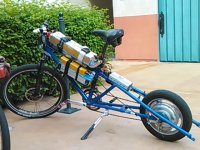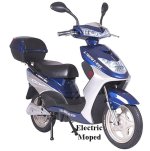Blueshift said:
Batteries are still too hobbyist leaning. We need more stable batteries that work for a good long time (more cycles) and that if something should fail, I get it repaired somewhere. Batteries are still inferior because sometimes u need a voltage-meter, take the whole thing apart, and have some know-how to work on them.
Buy a competently built battery composed of high quality, OEM-direct 18650s, with a high quality BMS on it, and you won't have to mess with them.
Yes, it costs more. No, you don't have to mess with it, pretty much ever. There are quite a few reliable battery options out there, it's just that the vast majority of people on ES don't seem to be willing to pay the cost for them. I remain perpetually amazed how many people insist on turning junked laptop batteries into something to power an ebike, and how popular the Hobby King fireballs are, even despite their known problems with long term reliability.
You want to see how to do a pack right? Go look at what BionX is doing. I'm a bit annoyed by their proprietary nature (though I make money from rebuilding them), but they do packs right, and they've shown some nice improvements over time with the pack and BMS design. The older packs had a dead-reliable BMS that only had to do bulk voltage sensing because the cells stayed balanced (Sony US18650s - spinel LiMn, see other threads here for their behavior, and I can confirm that the packs I receive are balanced to within 0.01v from highest cell to lowest cell). Most of my interactions with those are either packs that were left to sit off charge for 1-1.5 years and are stone dead, or ones that work just fine, but after 6-8 years of use, have lost enough capacity to annoy their owner.
Their newer packs include a "deep sleep" mode that will entirely cut the BMS off from the pack at a certain state of charge (plug the charger in to recover), which helps with long term storage, and very advanced diagnostics available over the Canbus interface.
My Ebike, no I am not going to manipulate the transducer to make the flux capacitor operate at a .083679084 flatulence level.
I want to be a consumer not a technician.
Then pay more money and buy a higher quality pack.
I paid $600 about 3.5 years ago for a BatterySpace 13.3ah LiFePO4 pack for my bikes. I've literally done nothing but plug it in to charge and ride since I bought it. Zero problems. Is it expensive? Sure, but it works and it's been a daily commuter pack for it's entire life (until about 3 months ago when I moved and no longer have a commute).
Yes, if you focus on cheapness over everything, you'll have assorted issues with your packs. If you focus on quality, they will overwhelmingly just work.
dogman dan said:
Since the battery known to have a problem is now illegal to ship, we really never know what the damn problem was. Bike shop techs can't fix em, even if it was a simple bms replacement. The defect battery is disposed of by the shop or by the customer, and a replacement sent.
Yeah.

It's sad. Batteries that need a quick touch of an iron being scrapped.
If the customer can hand deliver a battery to us, then we can fix a bad bms. But again, few problems, and when they do happen, usually they are too far to drive the battery back to us.
Per my understanding of 49CFR, it's only bad cells that can't be shipped. A battery with a bad BMS should be entirely legal to ship, if you can determine that.





